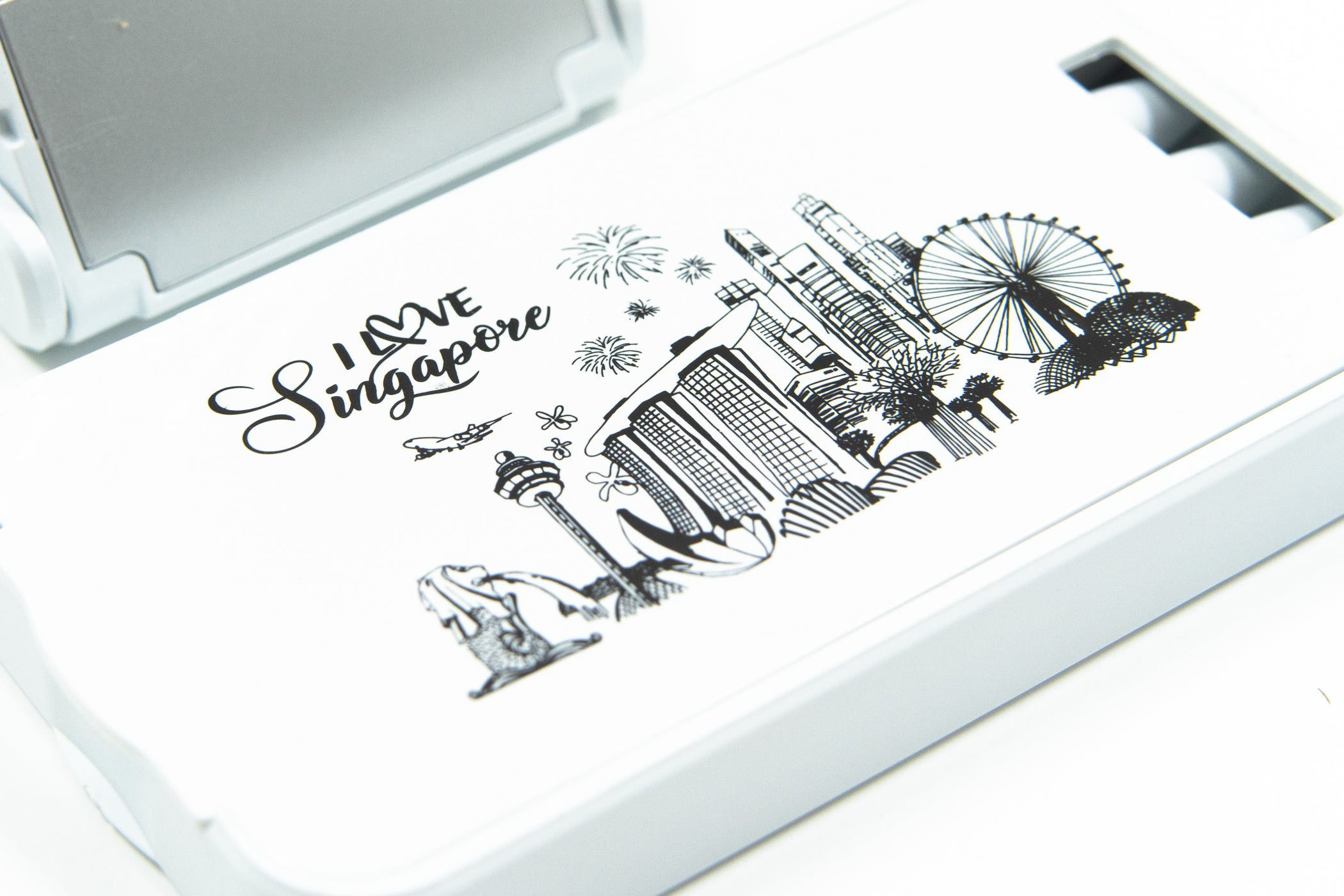Printings
We offer 6 different kind of logo printing processes across our product range. Here is some information on the different processes to help you make a better decision on what to choose.

Screen / Silkscreen Printing
This is one of the most common methods of printing where ink is applied to a variety of surfaces and products. A stencil or “screen” – hence the name - is used to define the printed regions by having some areas that allow the ink to seep through on to the printed surface.
Screen printing is very durable can be done on a wide variety of materials and surfaces (flat and curved) hence making it the most popular print method.
Best For: Logos / Images that have 1 to 2 solid colours without gradients.

Laser Engraving
This is the most economical of all the logo imprint methods and is commonly used on metallic or wooden products. A high powered laser is used to etch out an imprint on the surface, and this makes this form of logo imprint extremely durable.
The colour of the logo is usually a different shade of the metal’s or wood colour, or possibly removing the top layer of paint on some products to expose the bare metal beneath, hence creating colour contrast.
Best For: Single-tone logos on wooden and metal products. Low-cost print customization.

Heat Transfer / Thermal Transfer
This print method is great for a colourful image and logos on porous materials like fabrics. An image is printed in reverse on a piece of plastic, which is then placed on the product and transferred over via a heat press. This process is used because allows for an addition of another base layer of bonding gel or base behind the ink, which allows the image/logo to adhere better to porous fabrics and hence have better longevity as opposed to direct printing on the material.
Best For: Single and full-colour printing, heat resistant surfaces and fabric products.

Digital Direct Printing
This print method is arguably the most advanced print method where the image or logo is printed directly on to the product, just like an inkjet does. However, this high-tech form of printing uses a special type of ink and process where the ink is immediately bonded to the surface with UV light.
This process prints directly from an image file in a computer, so no stencil or die is needed in the process, and can render full-colour images directly on flat surfaces.
Best For: Full-colour printing on flat, non-porous surfaces and highly customized products.

Embroidery
This process uses a computer-controlled machine with different coloured threads sewn prick by prick into a fabric base to create patterns and images. This also tends to give the logo a “pop-up) or 3D feel as the threads are stacked together layer upon layer to create the image. This, in turn, makes the product and logo very wash-resistant and long-wearing.
Best For: Single and multi-colour logos on fabric products like shirts and bags.

Embossing / Debossing
This process uses a metal die with a protrusion the shape of the desired imprint/logo, then applying with pressure to a compressible surface. The result is an indentation in the surface the shape of the imprint/logo on the metal piece.
Best For: Subtle single tone logos on leather products like notebooks and key chains.
